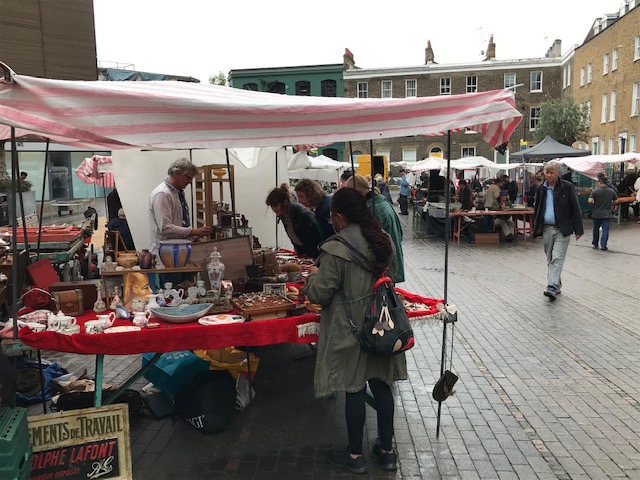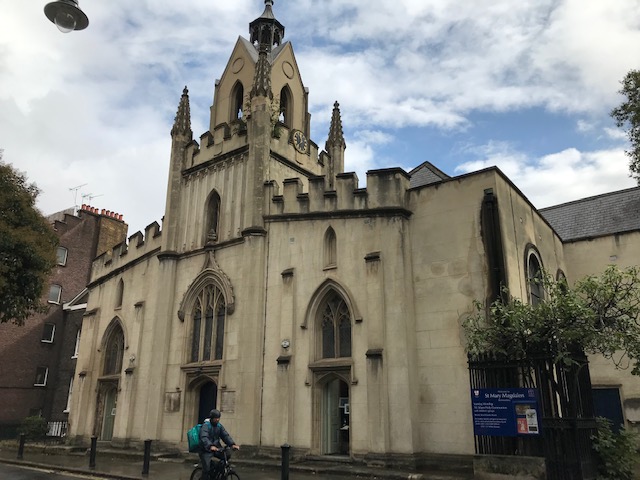‘Bermondsey’ is a no-nonsense Anglo-Saxon placename, combining a personal name, Beormund, with the Old English ‘eye’ / ‘eyot’ / ‘ait’ meaning ‘small island’. Beormund was presumably a local chief or bigwig and this was his place, Beormund’s Isle, Bermondsey. A reminder that in early medieval times much of the south bank of the Thames was a morass of marshes and creeks with an archipelago of large and small islands.
In this series of visits to South London’s Domesday churches, we usually have no idea how old the churches were when they were recorded in the Domesday Book in 1086. There have been odd exceptions, such as St. Mary-at-Lambeth – but St Mary is unusual in that it was founded by a member of the royal family, which increased the chances that its origin would be recorded and that the records would survive. Generally however, we are ignorant. Most of the first churches on the sites we have visited might have been established at any time between the seventh and eleventh centuries, a span of four hundred years.
With Bermondsey, however, we have a date. Thanks to surviving correspondence between a Pope in Rome and a monk in South London, we know that the first Bermondsey church was in existence by the early eighth century, 708-715. At this time Lundenwic, the riverside trading settlement at Aldwych and Covent Garden, was thriving, and south-east England was dominated by the Anglo-Saxon kingdom of Mercia, based in the Midlands. Presumably this is why the Bermondsey foundation, probably a minster, was linked to a monastery at Peterborough in the Mercian heartland. Its buildings would have spilled out to the south of the church where Bermondsey Square, with its regular market, sits today.
Minsters were a regular feature of Anglo-Saxon Christianity, clerical communities and evangelising centres from which priests went out into the countryside. But the Norman conquest, three centuries later, signalled a change. In 1086 the Domesday Book recorded a “beautiful new church”, nova et pulchra æccla, at Bermondsey. This new church was part of a wider programme of re-establishing the institution along new lines. The old minster was transformed into a Cluniac priory, becoming part of a powerful monastic order which enjoyed the special protection of the Pope. Perhaps the new church was regarded by the Domesday commissioners as “beautiful” because it was built in the Norman style, massive stone and mighty Romanesque arches, just like its mother church at Cluny in France.
In time Bermondsey Priory was promoted to become an Abbey, but in the sixteenth century this provided no protection once the programme of monastic dissolution took hold. The Abbey was closed in the 1530s and most of its buildings were demolished to make way for a fine house for the new landowner. Only the church survived, re-purposed yet again, no longer serving the Abbey but instead serving the local parish.
Late in the following century the medieval church was largely demolished and a new one built to a design by Charles Stanton. Stanton was a Southwark carpenter and architect. He took Christopher Wren’s City church of St Martin Ludgate as his model, and the interior still carries a seventeenth century flavour: high white plaster groin vaults and crossings; polished woodwork; the reredos bearing the Lord’s Prayer.
But the exterior is another matter. In the 1830s Stanton’s west end exterior was monstrously reinvented by George Porter. I have written about this before because Porter is an important figure in Penge, where he designed the iconic, eccentric, delightful Watermen’s Almshouses in the 1840s. But this earlier project at St Mary Magdalen in Bermondsey is, in my opinion, far from delightful.
Pevsner describes Porter’s west front as “a gimcrack but charming, wholly unscholarly Gothic revival”, which is, I think, remarkably charitable. To my eye it is awkward and ugly: the weirdly sloping battlements; the cartoon-sketch lantern on the tower; the stucco modelled to resemble breeze blocks. The overall effect is cheerfully, confidently horrible. But never forget that behind Porter’s graceless street frontage is Stanton’s delicate, balanced, poised interior.





